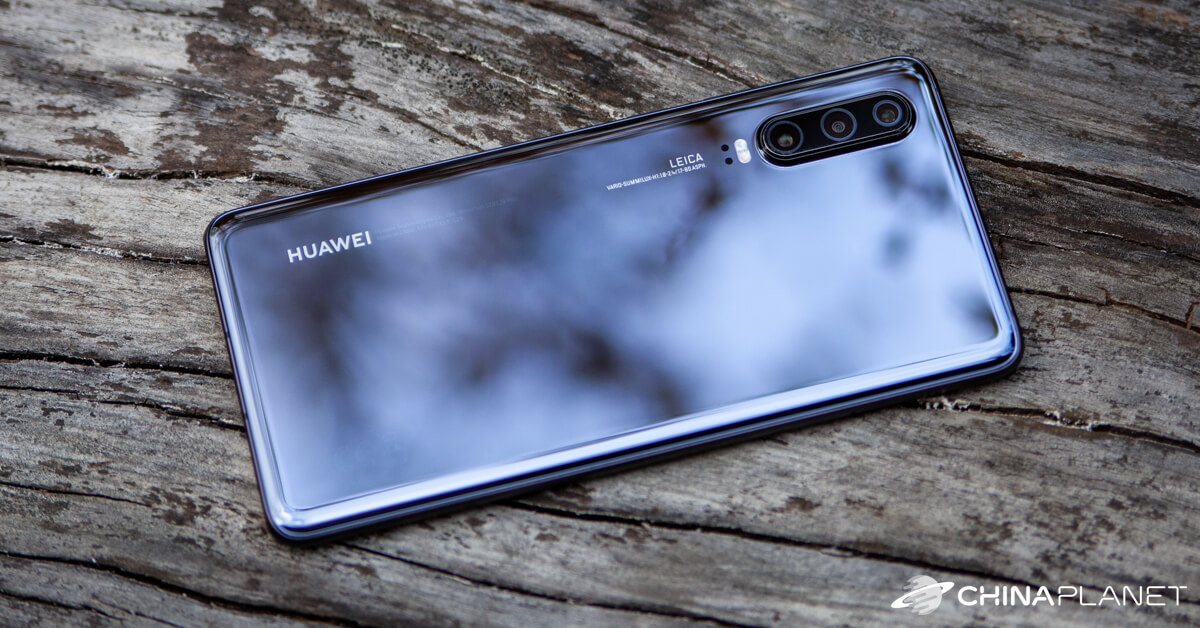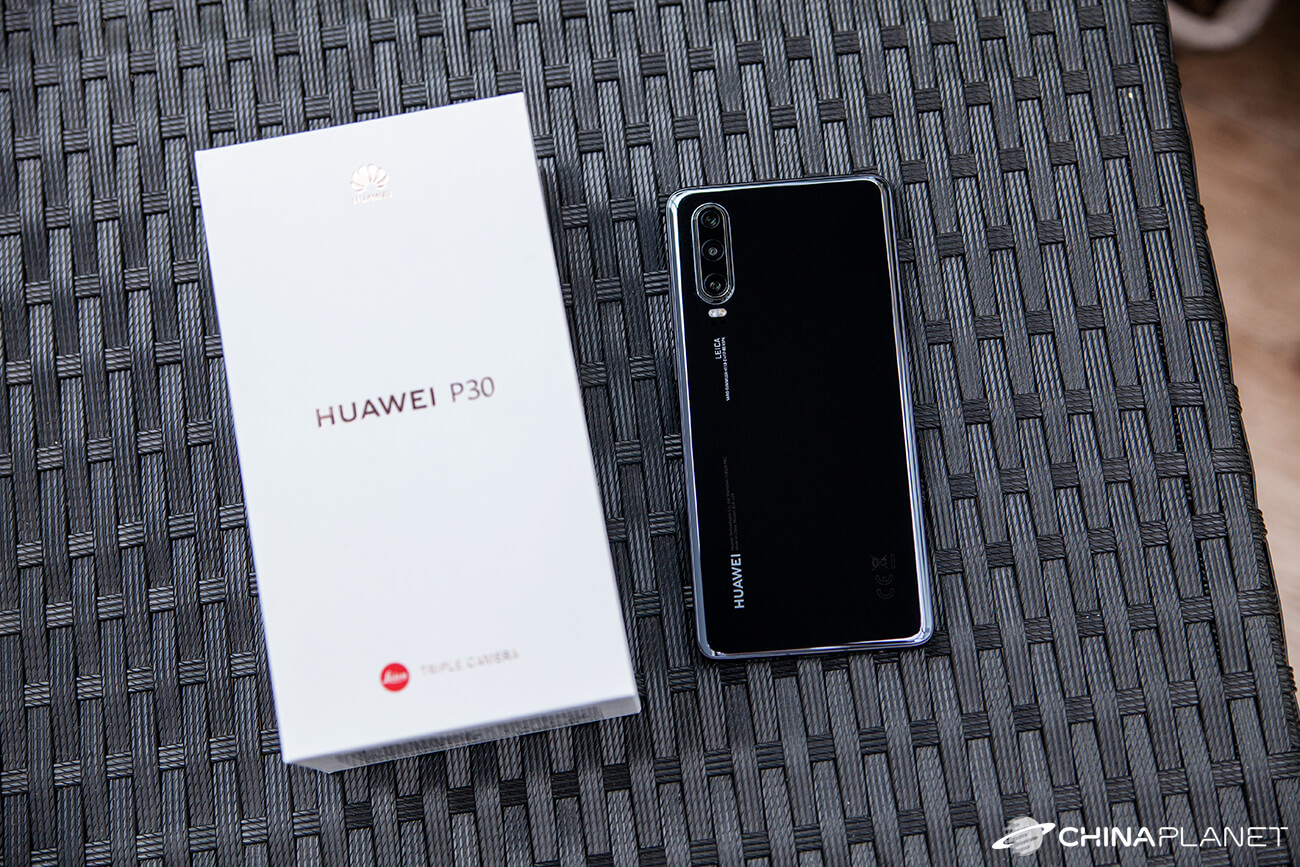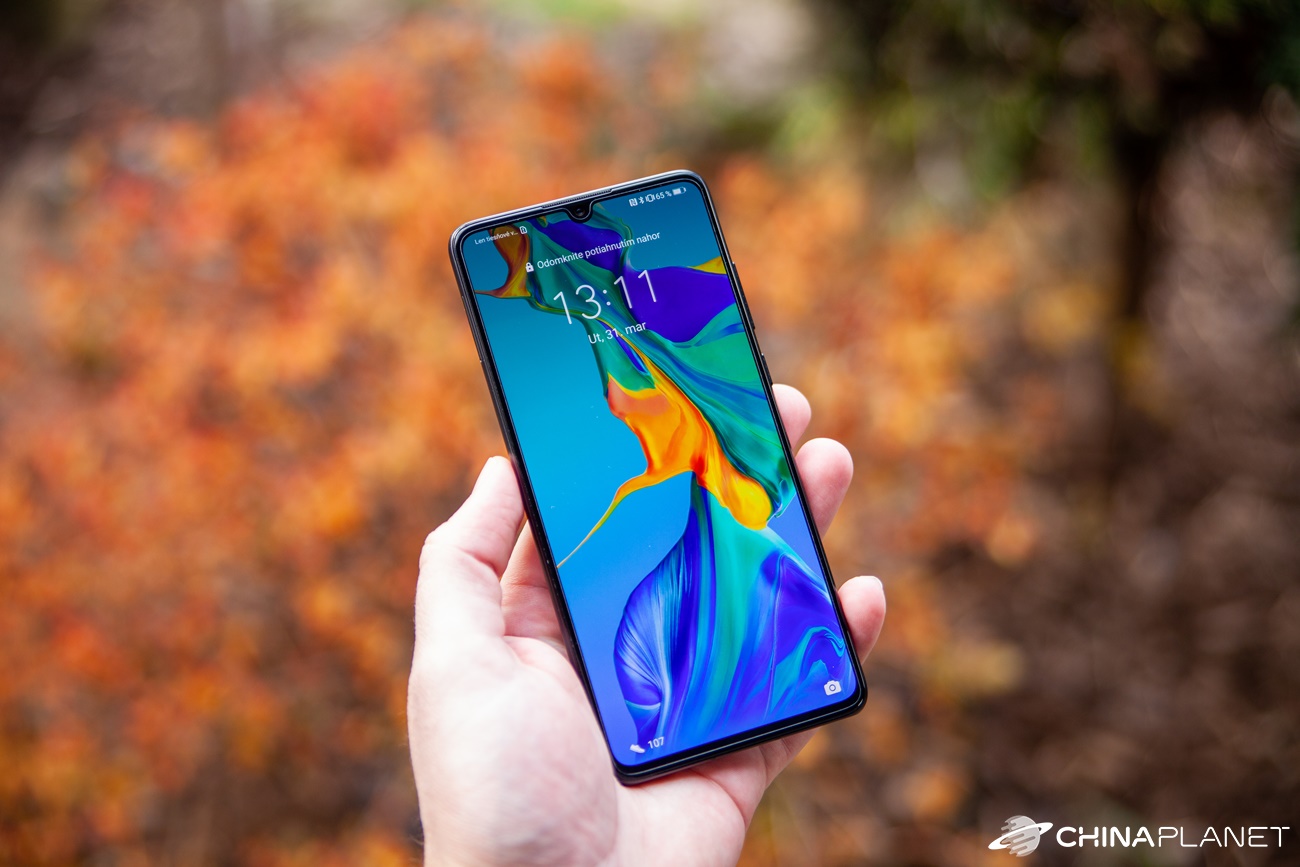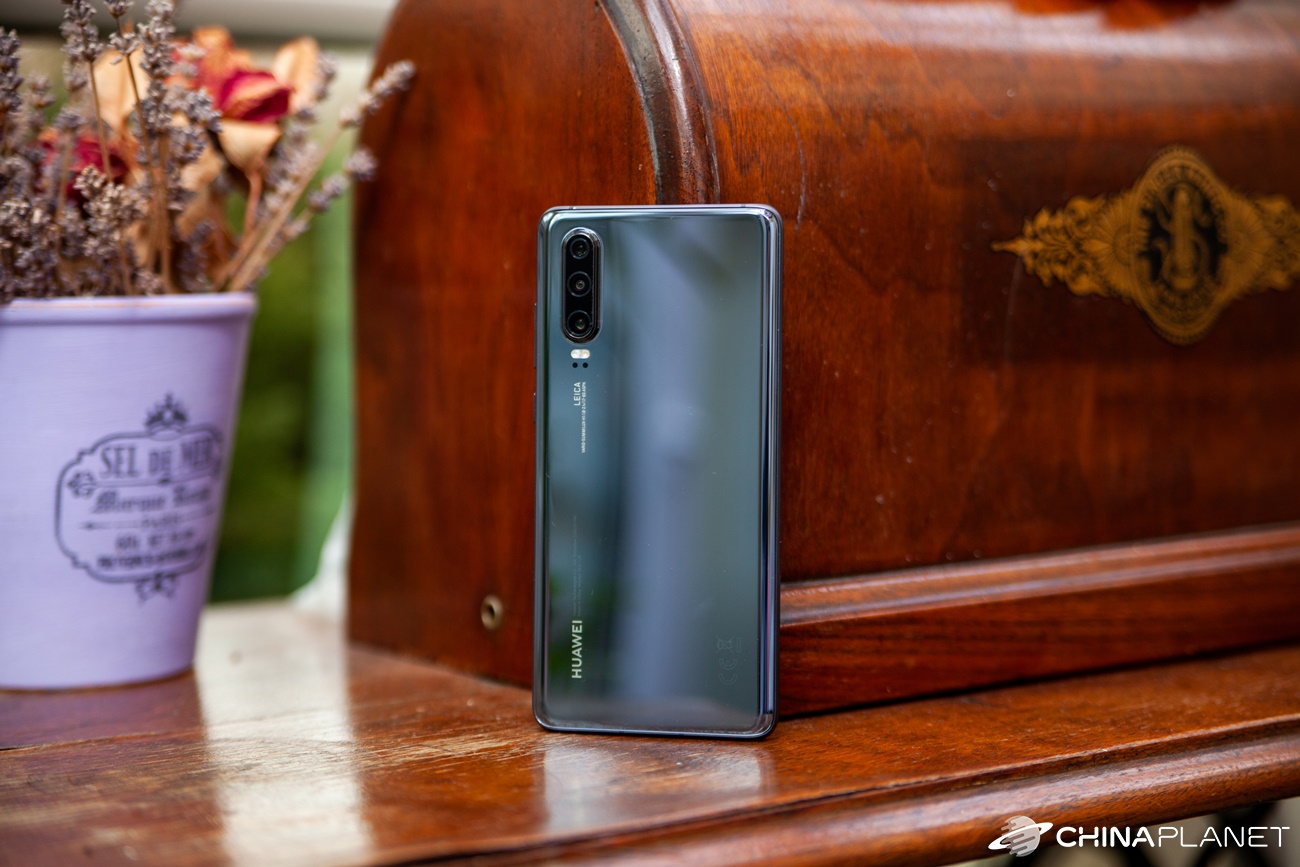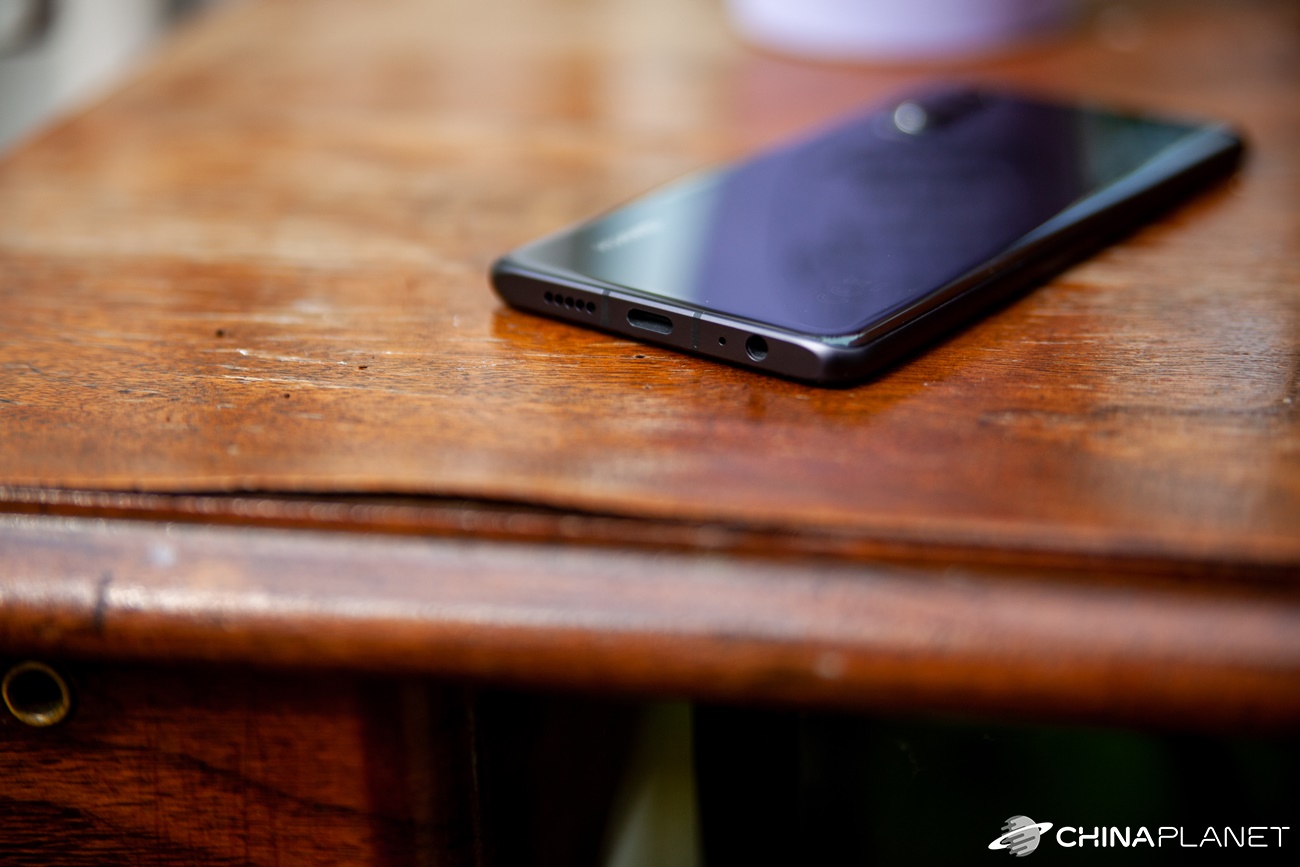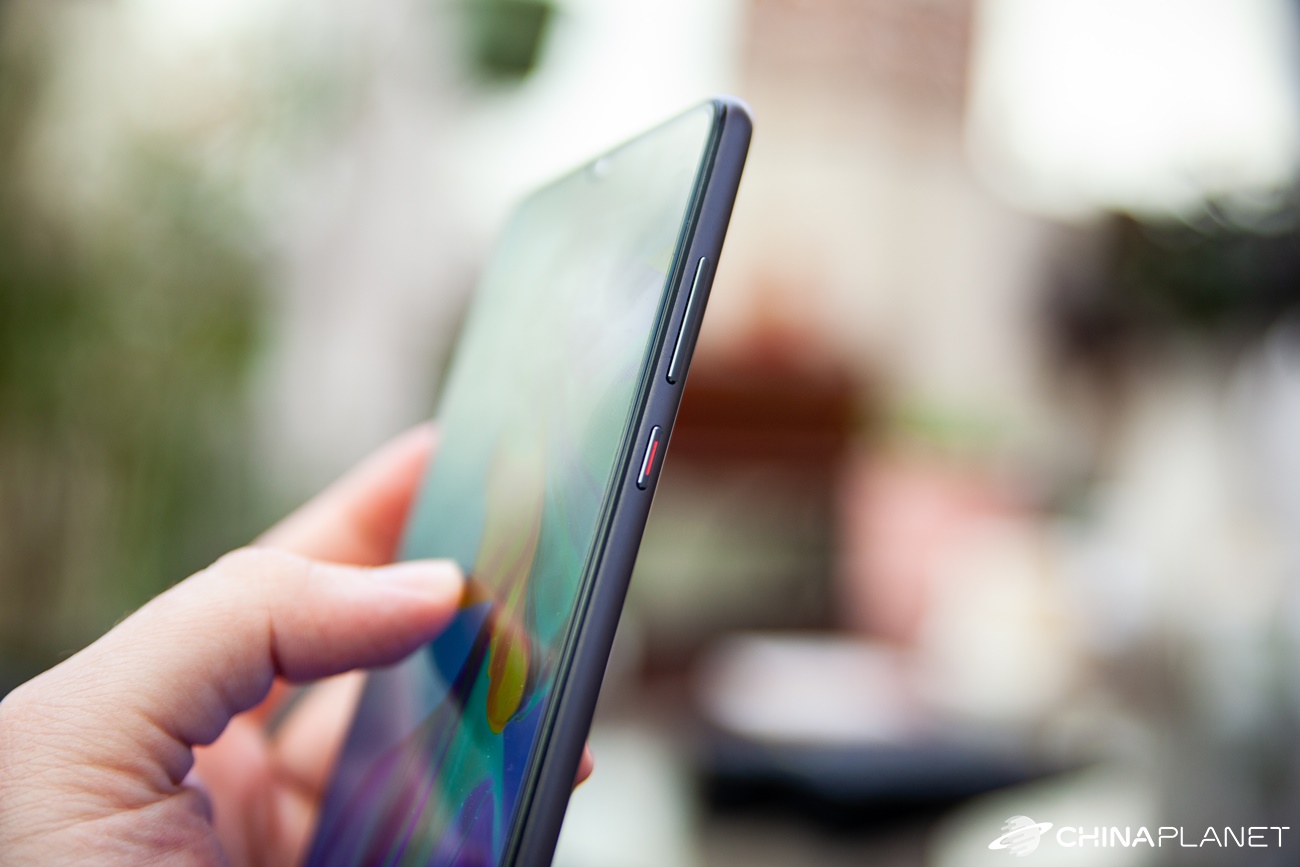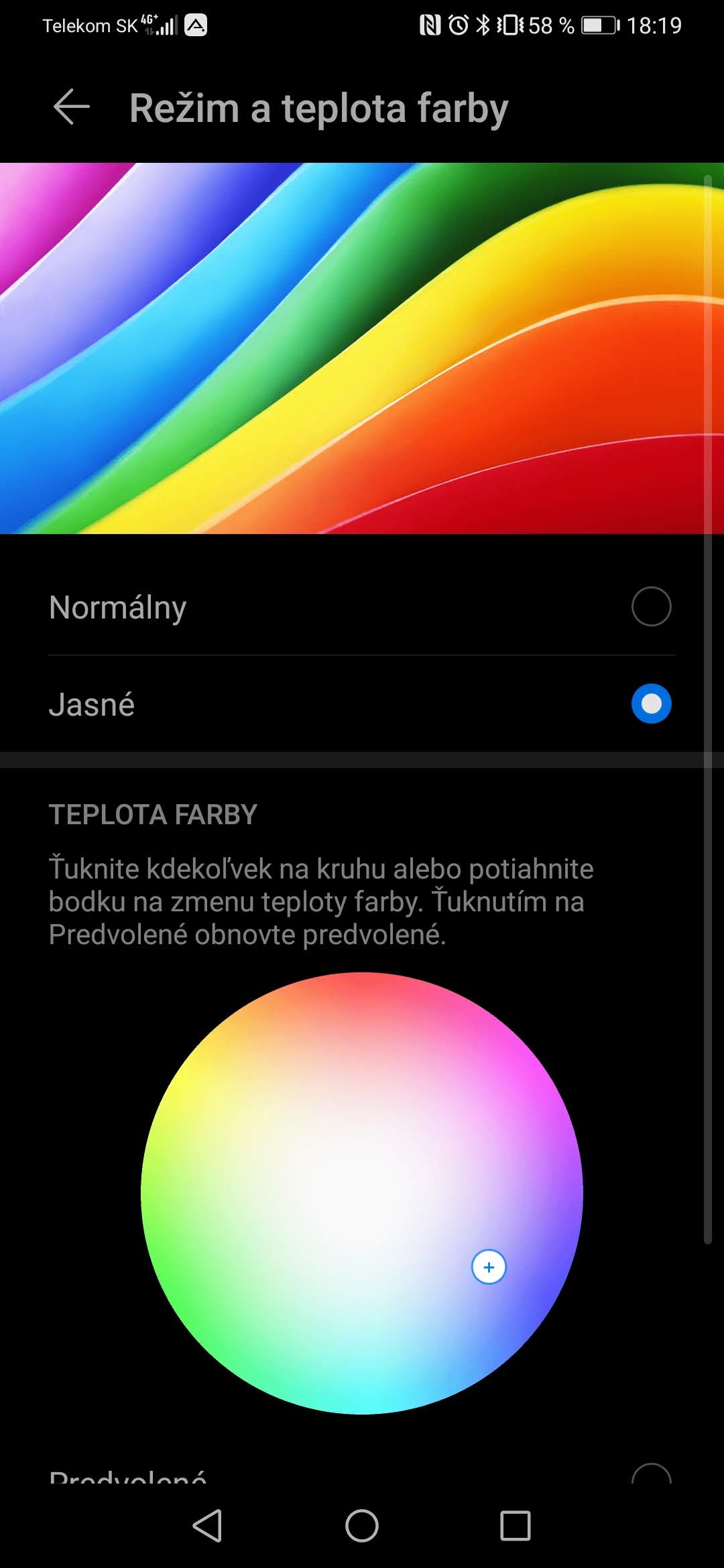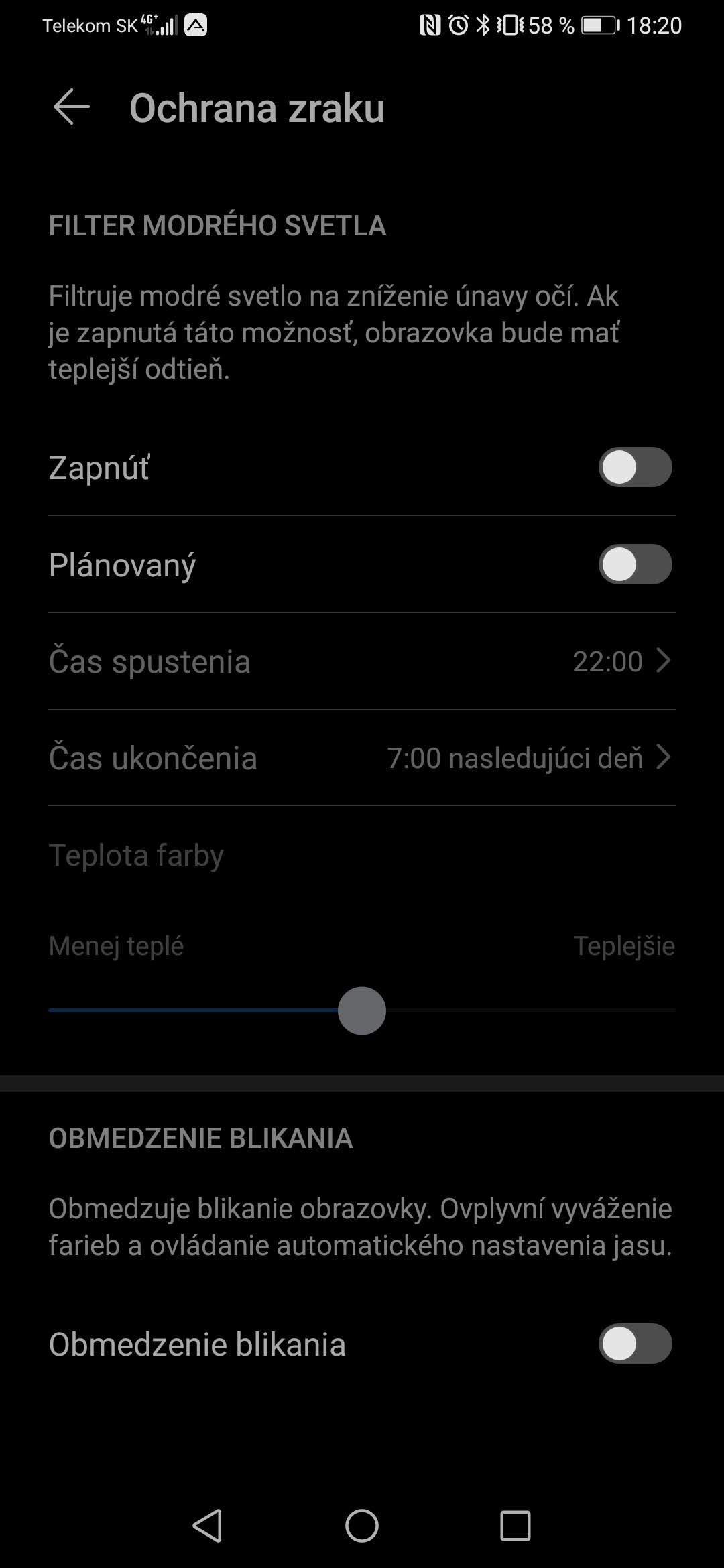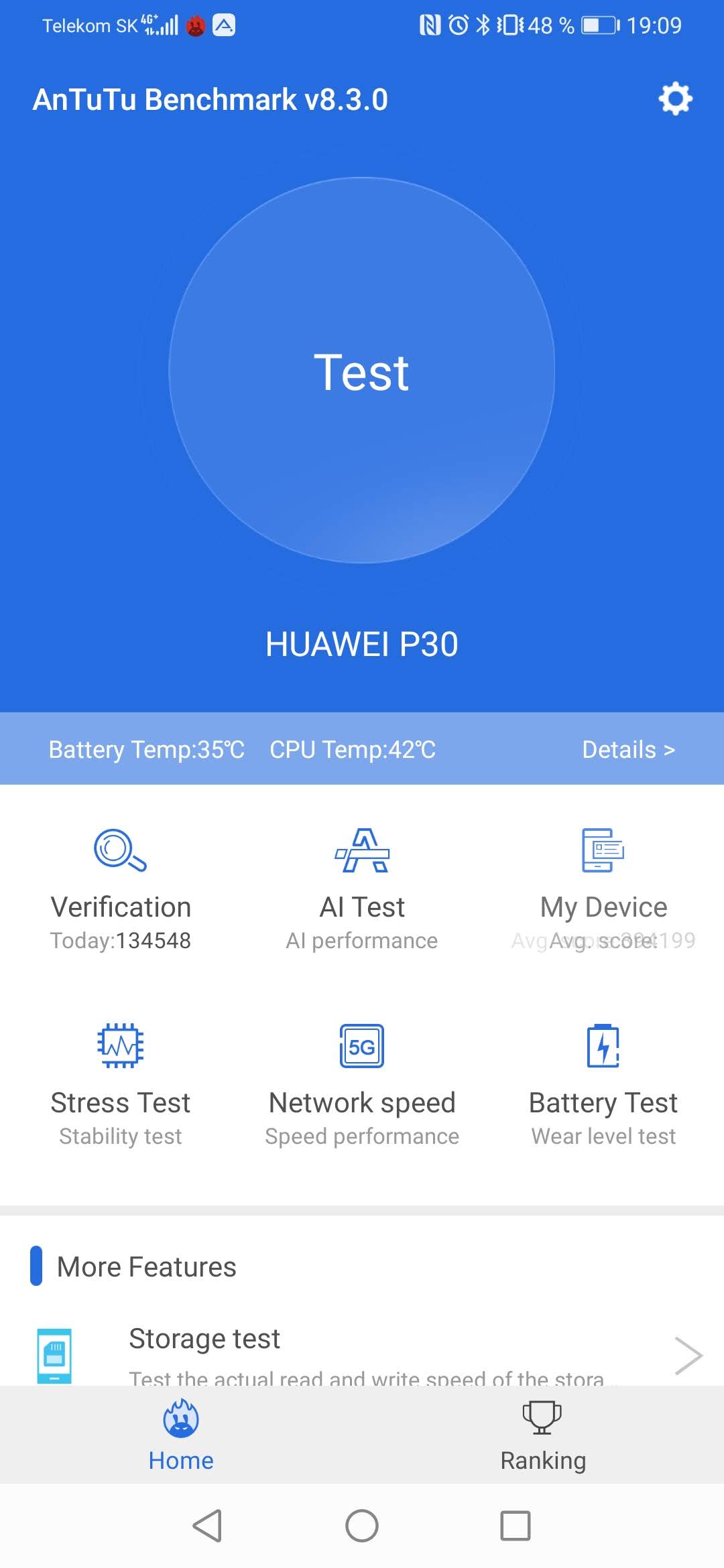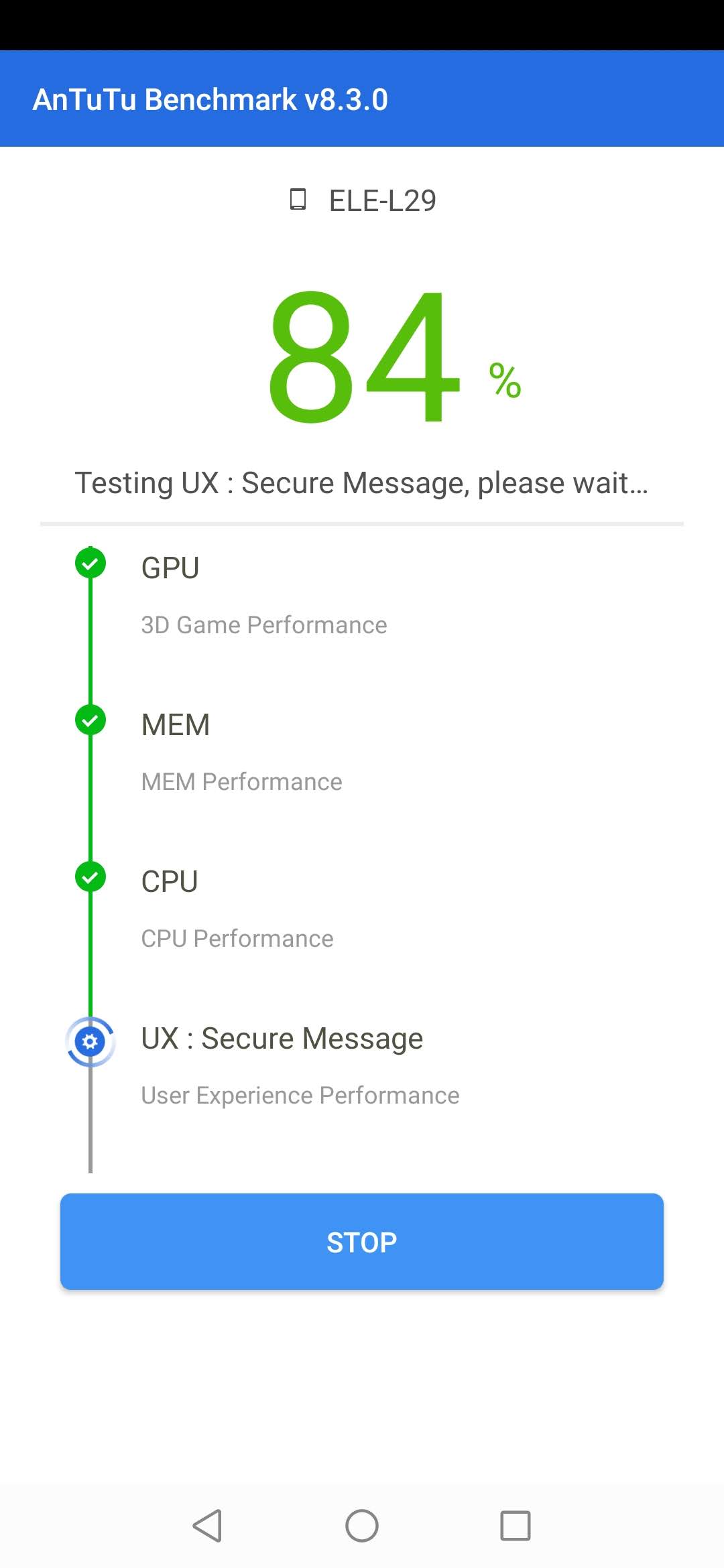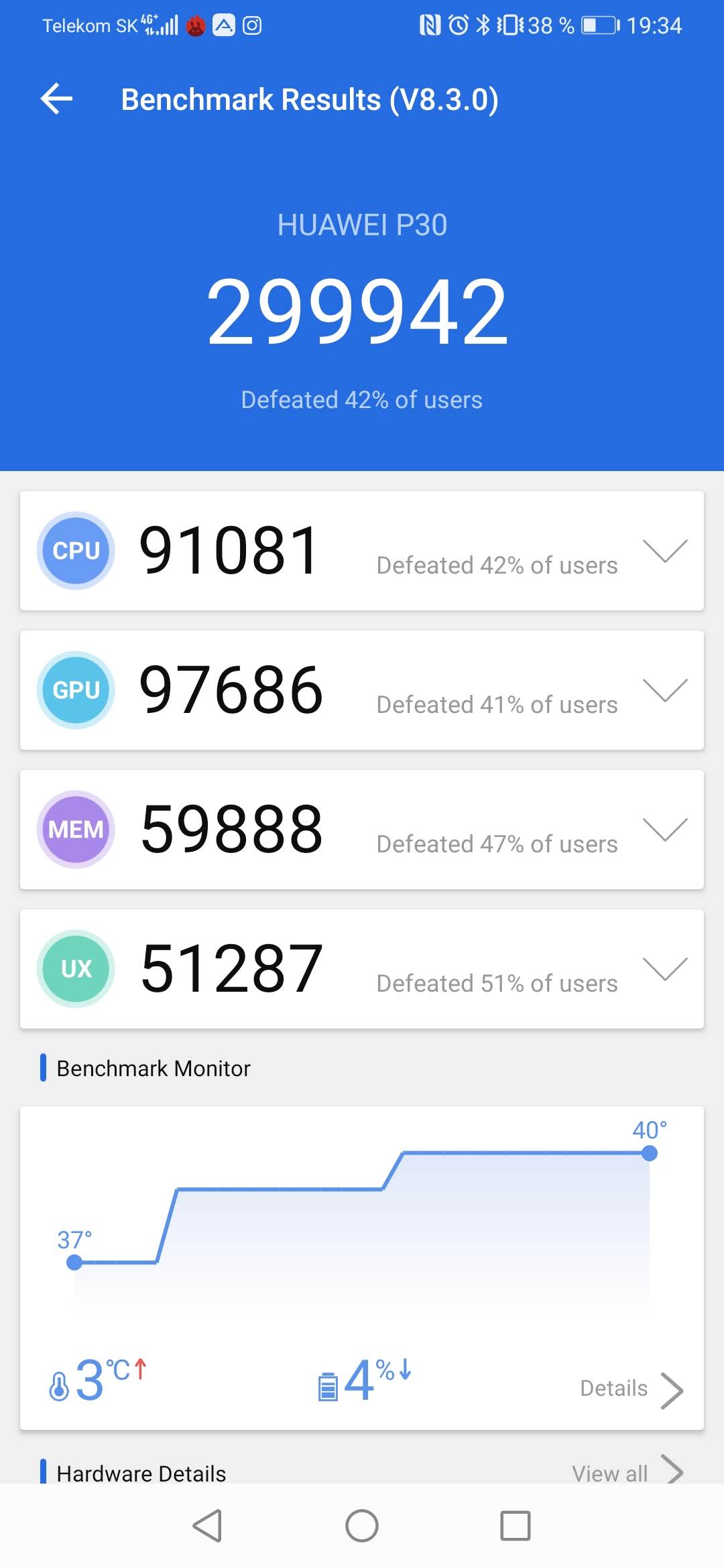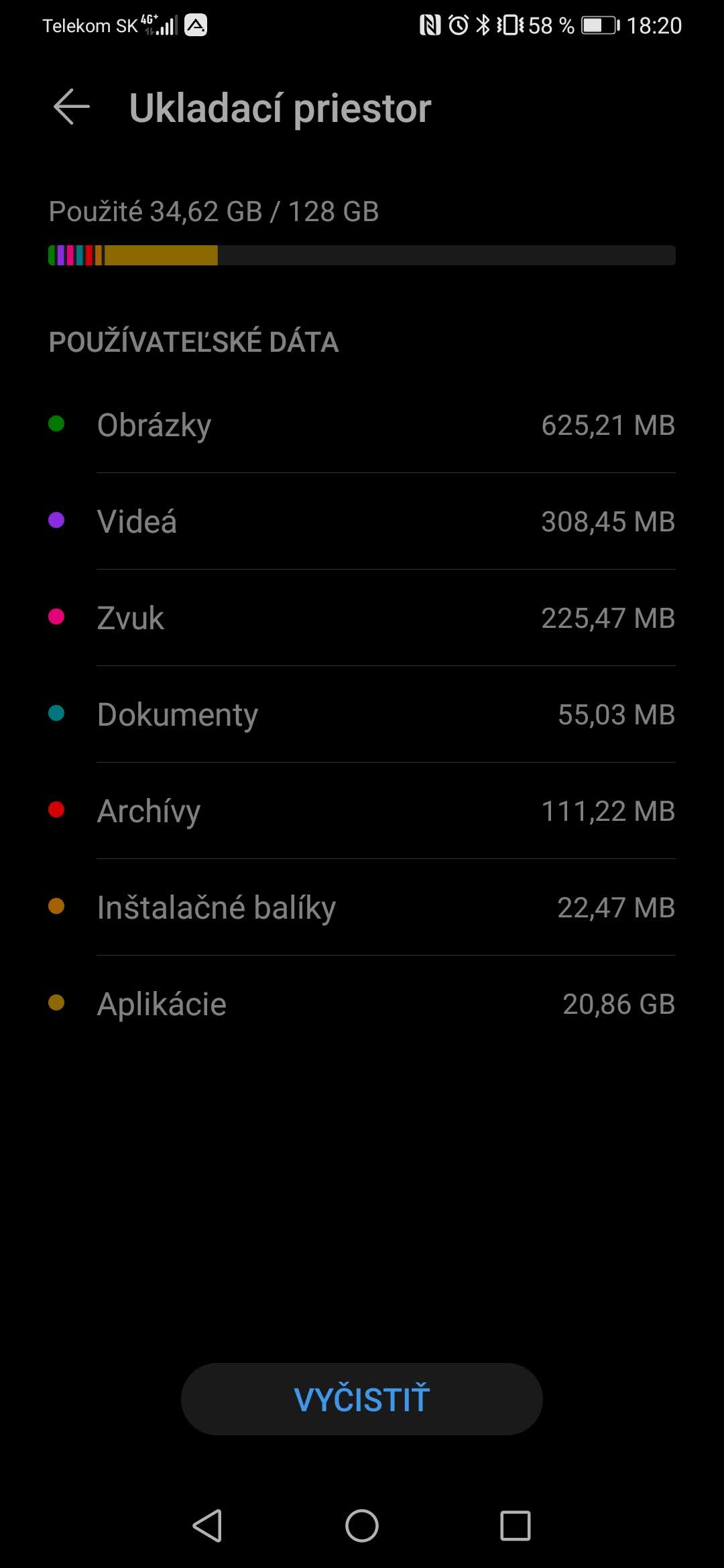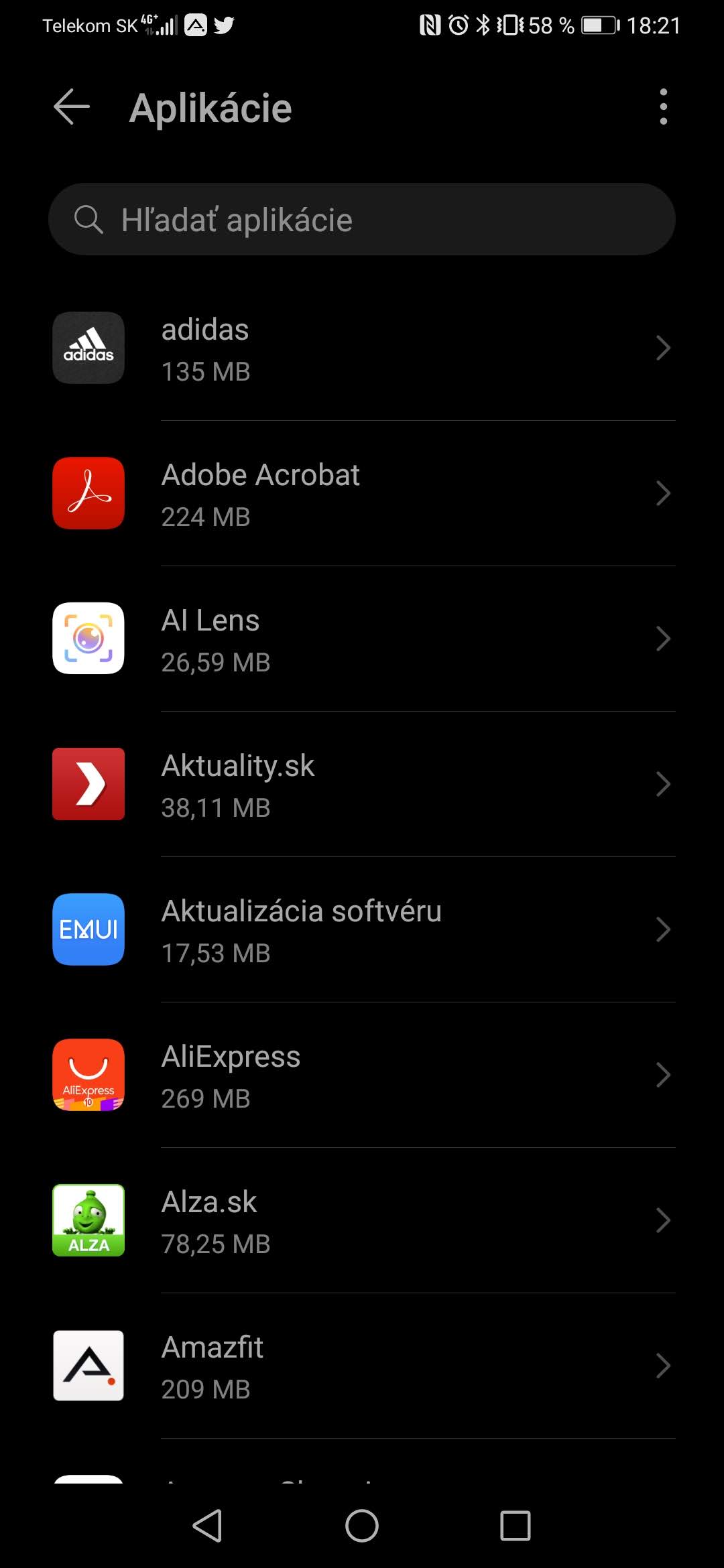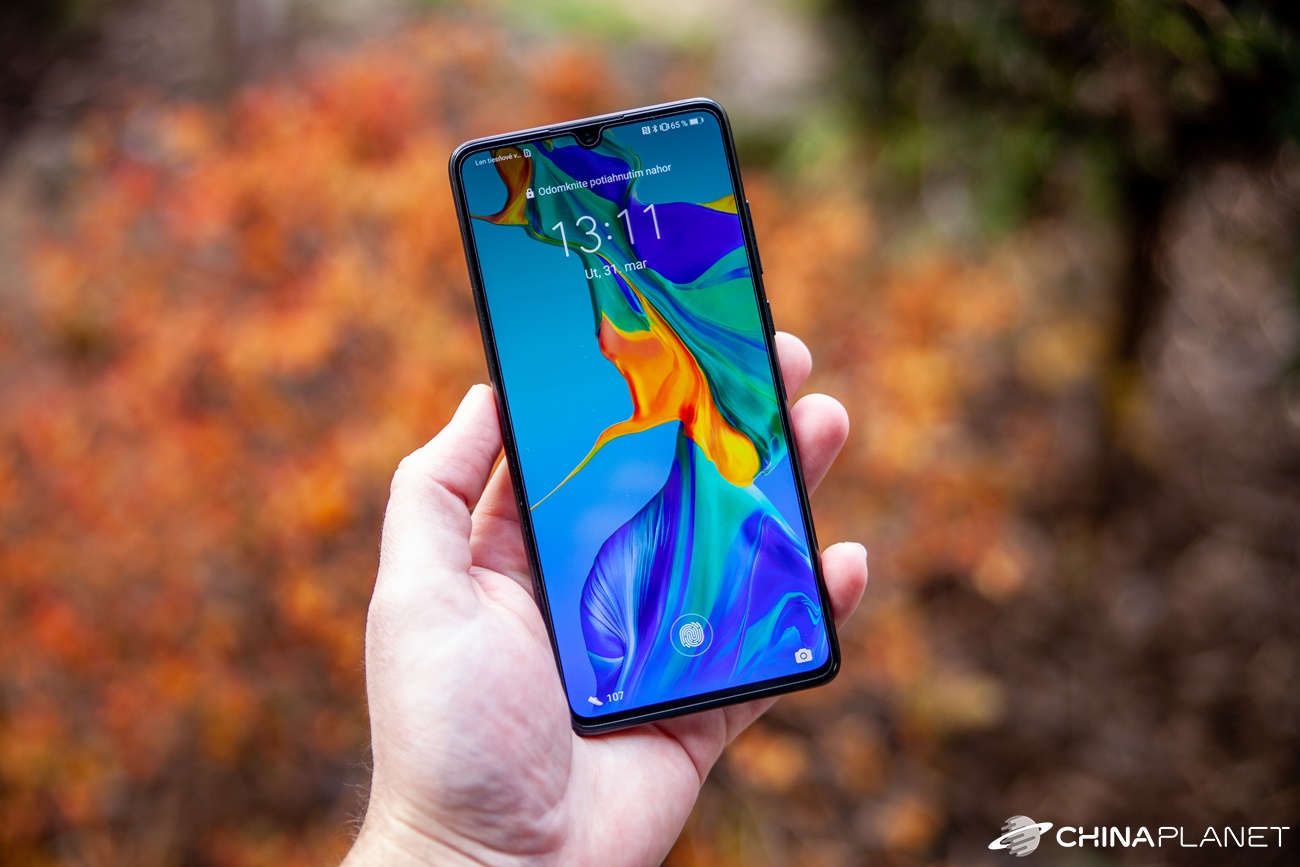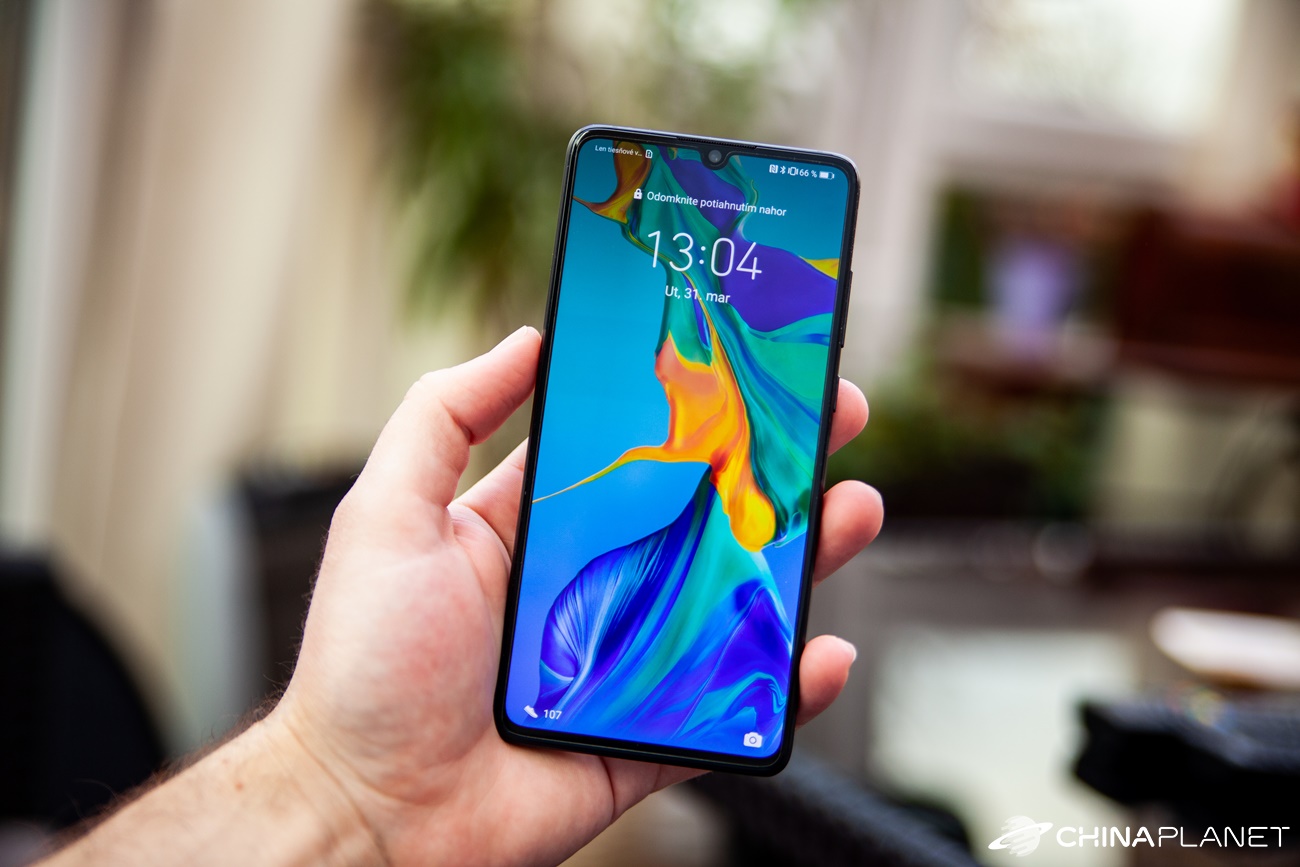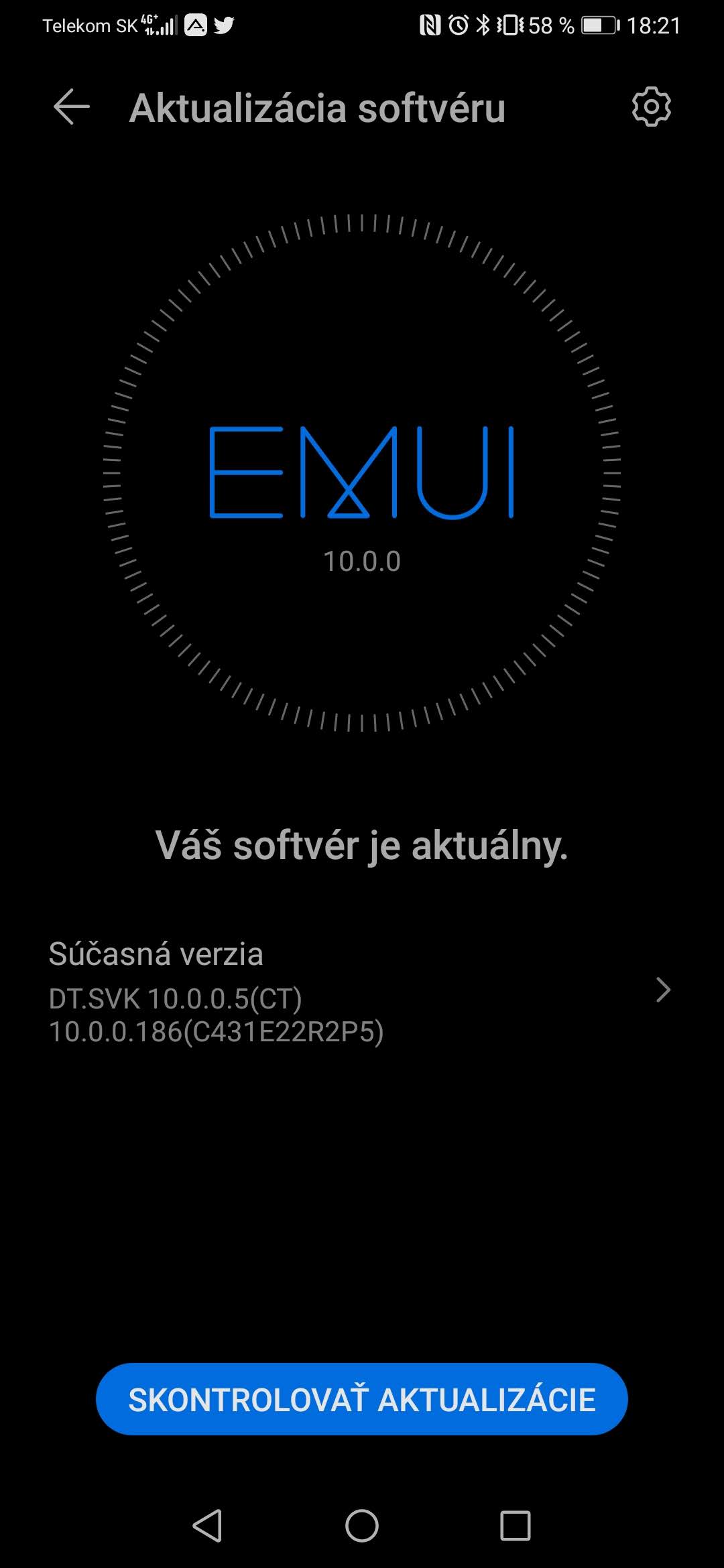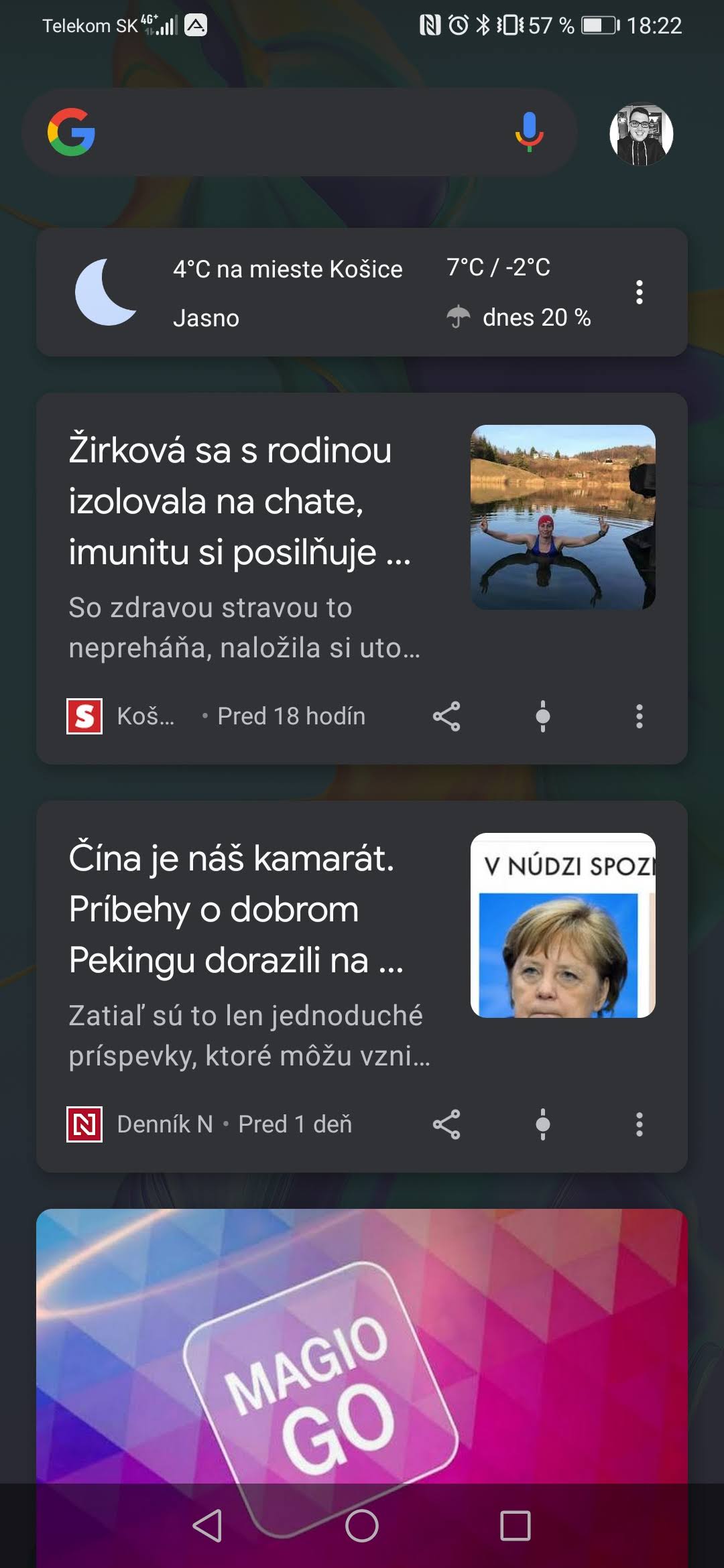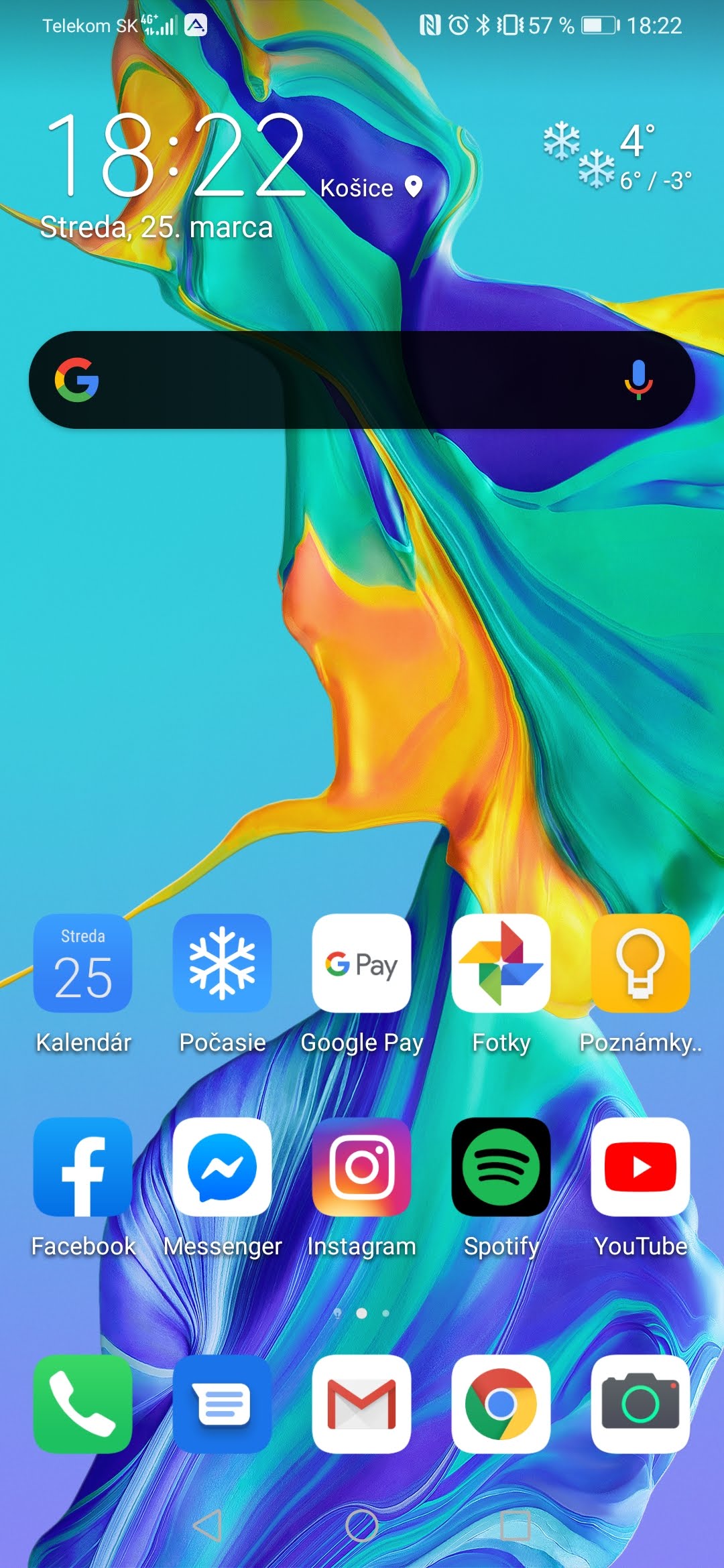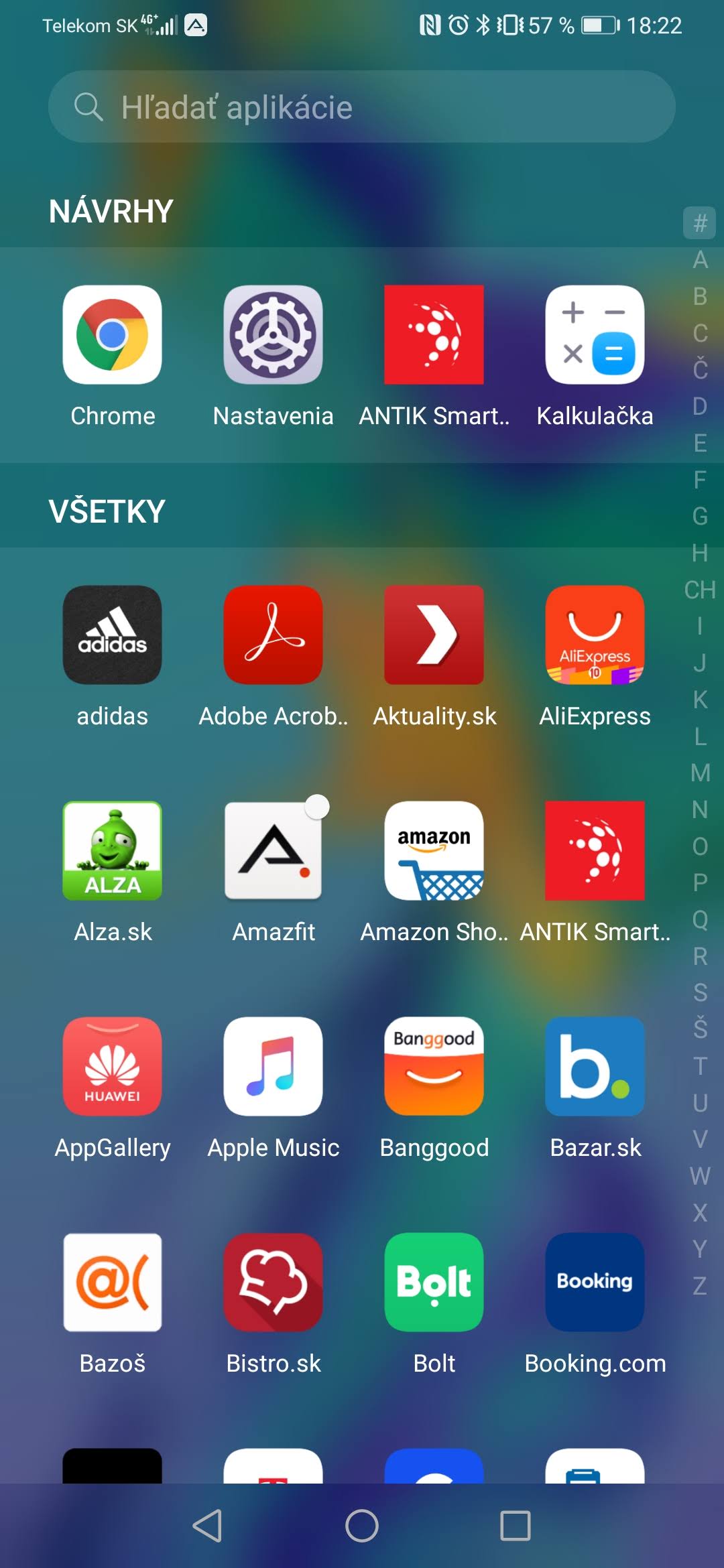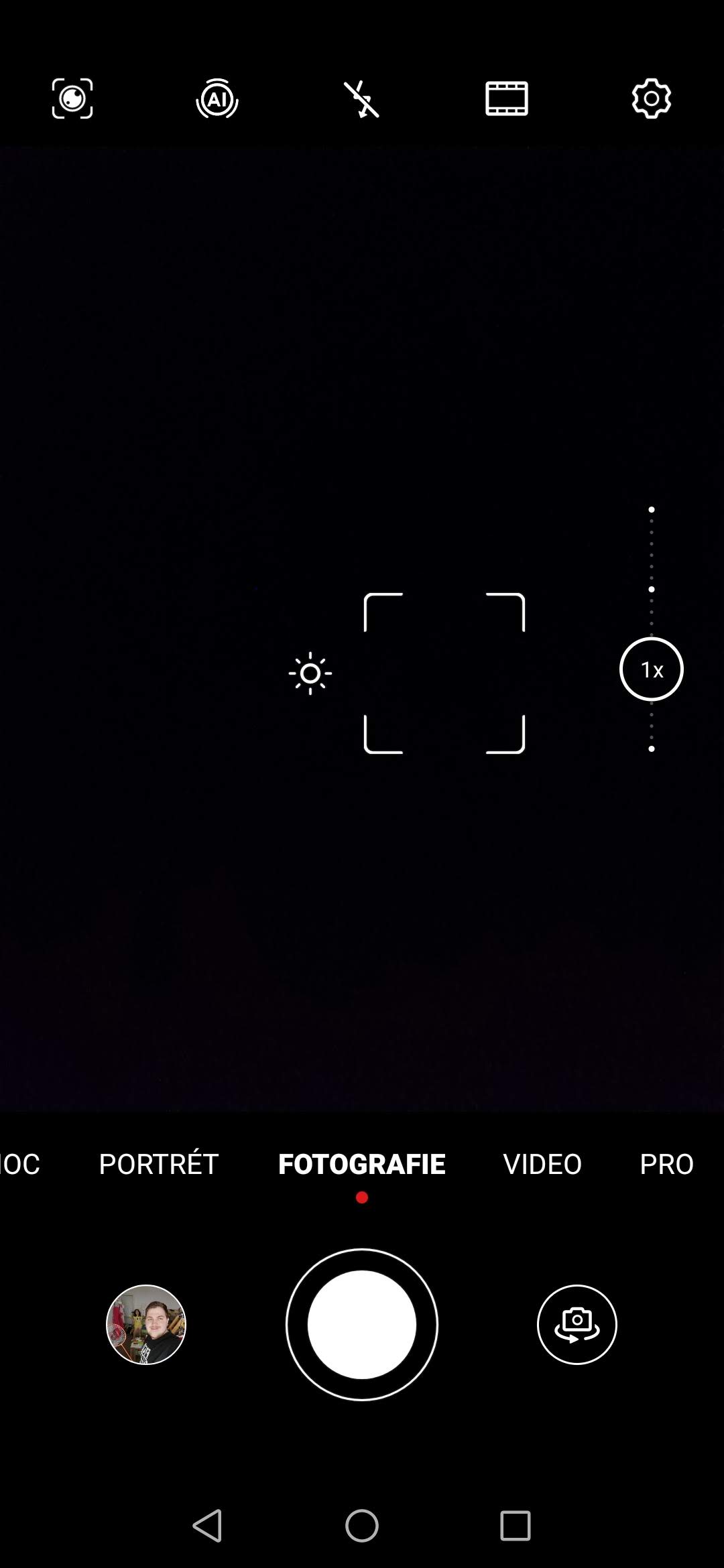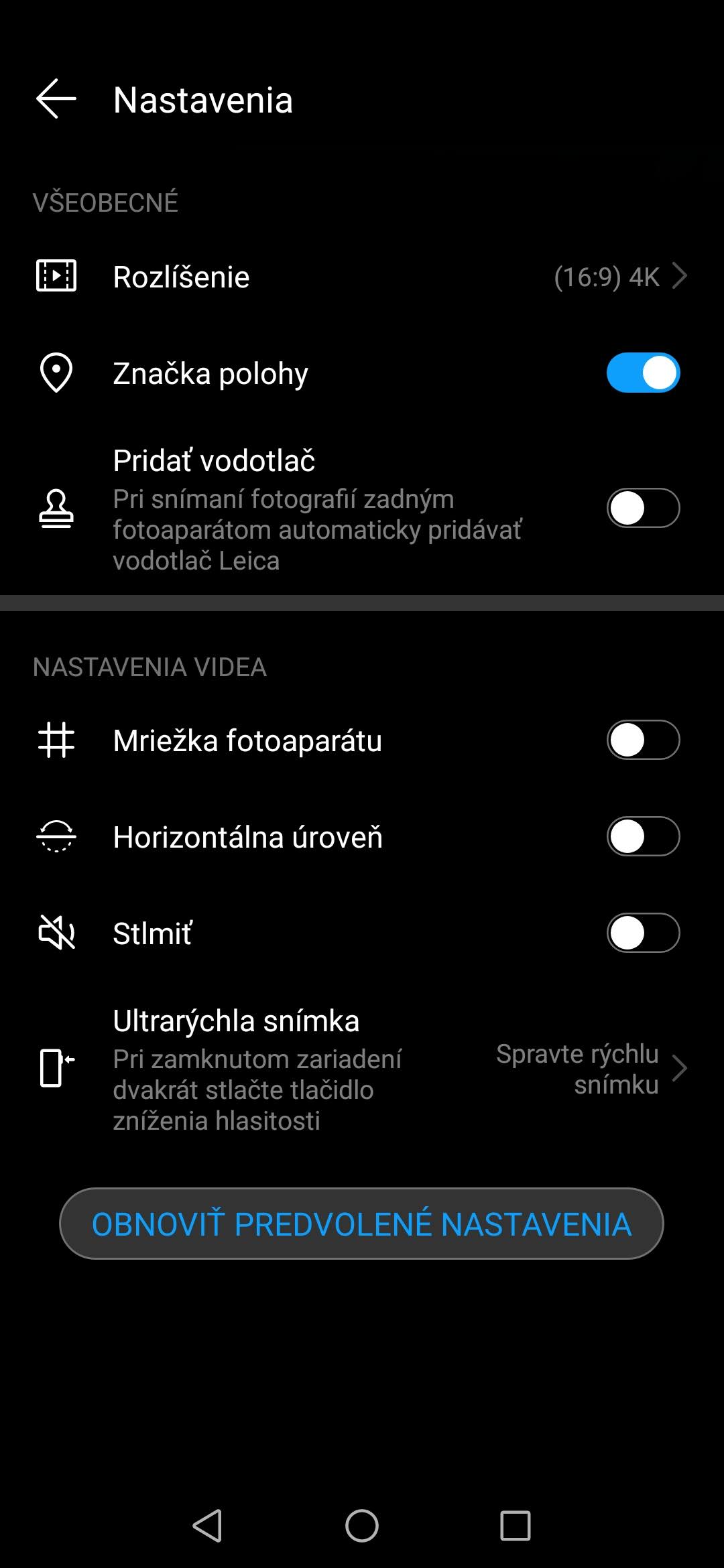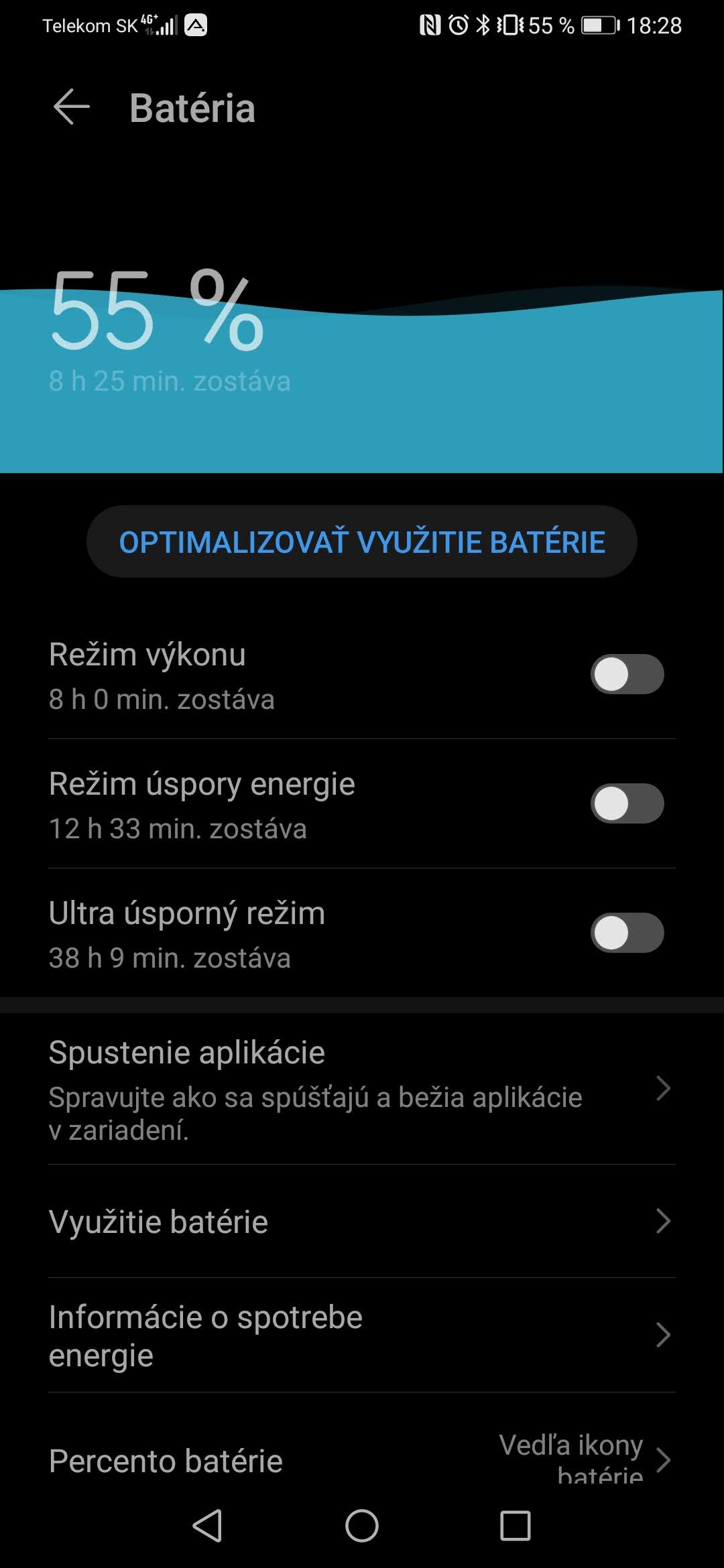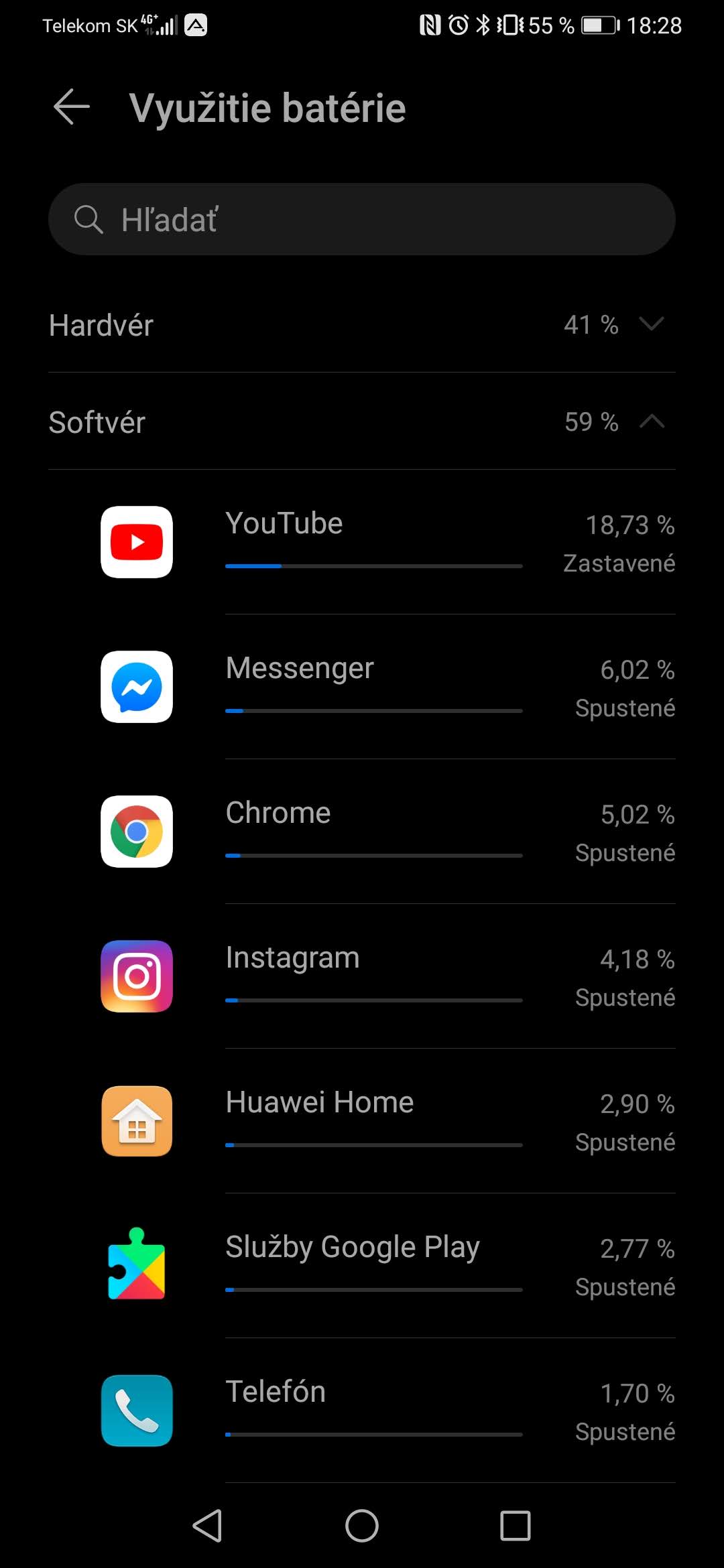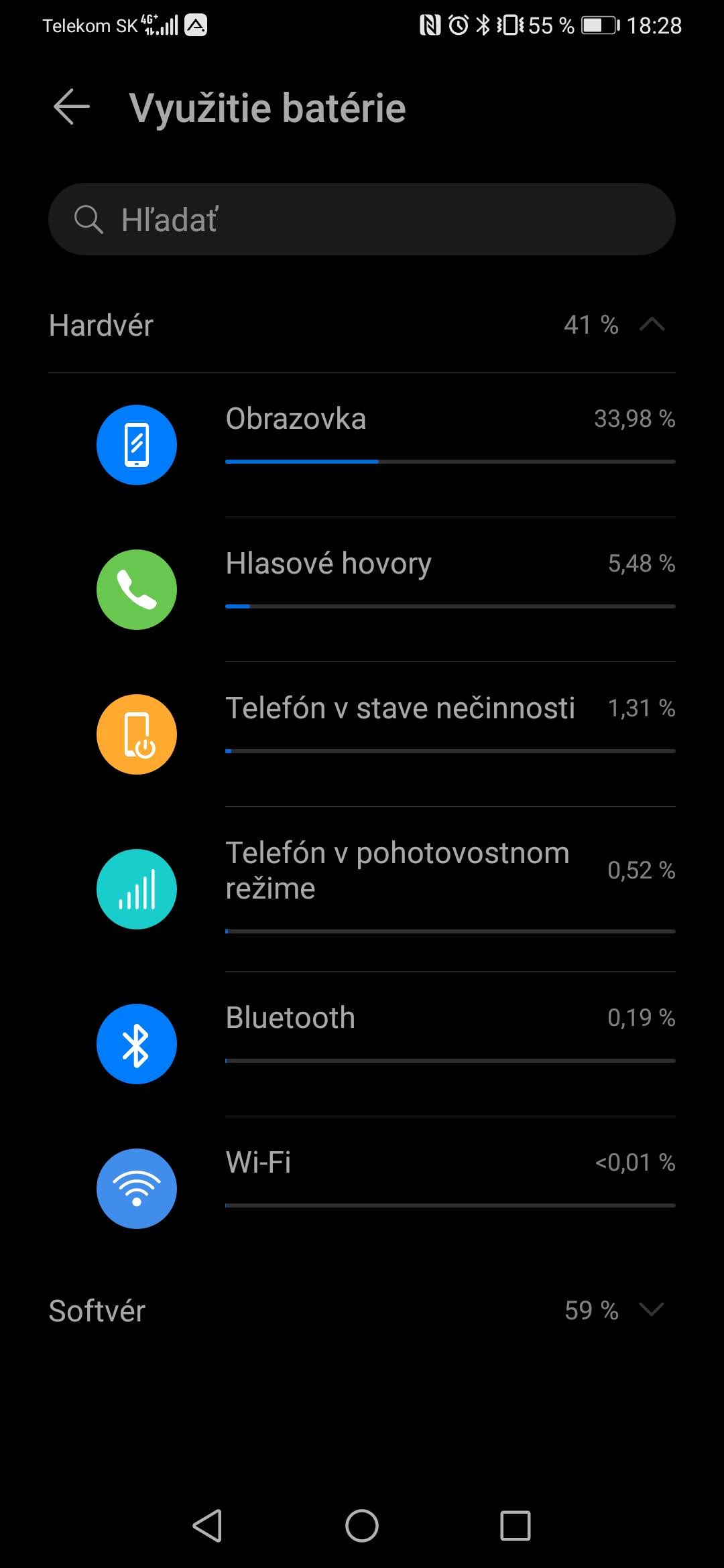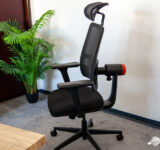Spoločnosť Huawei as the world's leading smartphone manufacturer, it also presents its flagship device line every year. It regularly competes with the leader in the segment, top equipment from the workshop of Apple or Samsung.
🔥 Watch the news from China Planet na Facebook aj Instagram.
In today's review, we will take a closer look at the flag model Huawei P30, which can be an ideal choice when choosing a powerful flagship smartphone with an excellent camera and a good selling price. The smartphone will not be lost on the market even next to the new generation P40Series and has one undeniable advantage - Google Mobile Services.
We purchased the device through the mobile operator Telekom in Slovakia. The device is also available in the official Slovak distribution and its selling price in local e-shops is approximately in the range of 549 - 599 euros.
The packaging of the device surprises with a fast charger
The phone will arrive in a white box of standard dimensions, which contains the luminous logo of the manufacturer Huawei and also the logo of the company Leica, which cooperated in the development of the cameras. After opening the package, the smartphone itself is covered with a protective foil on the very top.
The protective film is also on the display, directly from the factory. It is a foil that supports fingerprint scanning, which is a pleasant surprise from the manufacturer.
Under it there is a paper envelope, the contents of which are manuals and recommendations from the manufacturer in various languages, and there is also a needle for pulling out the drawer on SIM card or a specific Huawei NM memory card.
Below on the top floor is the 22,5W end of the quick charger, which reliably and quickly charges the battery with a capacity of 3650 mAh.
Along with the charger, there is also a USB cable type C, which on the other hand contains a standard USB type A connector. A nice bonus is the integrated headset, which consists of simple headphones with a microphone, control buttons and a cube-shaped construction.
Premium metal construction is a guarantee of quality
From the first unpacking, it is clear that this is a well-crafted flagship smartphone. The glass-metal "sandwich" is elegant and the phone has a really compact size due to the size of the display.
Front with minimal frames, standard battery capacity and suitable weight, the only downside is the high-performance rear camera module.
In our review, we have a black color version, but in reality it is rather the dark gray color of the glass surface and the black color of the metal surface of the device.
However, the Huawei P30 is also available in other color versions, we like white, for example, which also contains a transreflective surface of the back wall, which is characterized mainly by light play.
You will also enjoy certified and increased resistance to dust and water. Although it is not a complete resistance and the phone cannot be immersed under water, the manufacturer declares at least the IP 53 certification.
The layout of the elements is practical, with one exception
The dimensions of the device stopped at 149.1 x 71.4 x 7.6 mm, while the weight is a very pleasant 165 grams. In front, we can see the 6,1 ″ AMOLED display, which covers up to more than 91% of the front wall. It contains minimal frames, a minimal "chin" under the display.
Above the display is a standard speaker for telephony (not used to create a "stereo" effect), the front camera is placed in a fine drop-shaped cutout. A group of sensors also fitted above the display, in this case the LED diode replaces the ambient mode of the AMOLED panel.
We can move smoothly to the top edge of the device, where there is only a secondary microphone, for example suitable for video recording. In addition to this element, there are only plastic parts intended for the passage of the antenna signal.
The bottom edge is a bit more interesting. Also on this page are the mentioned plastic parts and the same functionality, but there is also a 3,5 mm audio connector, a primary microphone of standard quality for telephony, a USB type C connector for charging or connecting to a computer, as well as a loud "mono" speaker which offers good readability of sound and volume, but loses on its "stereo" siblings.
The left side, like the top and bottom edges, is metal. It is almost empty and contains only a drawer that hides a slot for a pair of nanos insideSIM cards. So it's about Dual SIM device and the choice of individual slots is up to the user.
The slot is hybrid, so it is possible to use it for one SIM and one memory card for storage expansion. In terms of storage media, however, only the specific NM card format from Huawei is supported.
The right side, also metal, contains a pair of high-quality metal buttons, which are also conveniently located for palpation with the index finger. This is the volume control button located above and the power on or off button located below it.
The latter is not only smaller, but it is also a color-coded button, it contains a red color for easier resolution, which is definitely a practical step on the part of the manufacturer.
We still have to evaluate the rear glass wall, which is susceptible not only to scratches and possible damage, but also to fingerprints and other grease. In the upper left part of this wall, there are three rear lenses, the module of which protrudes significantly from the body of the device. As a result, the phone swings when placed on a table, for example, which is definitely a disadvantage.
On the other hand, the sensor from Leica shoots really well and also contains the optical stabilization, which is usually due to such an unpopular and protruding camera module. Below is a dual LED flash and a pair of sensors. The back also contains only mandatory recycling information, camera information and the Huawei and Leica logo.
The famous AMOLED panel scored
In its relatively compact body, the smartphone offers a 6,1 ″ AMOLED display with minimal frames and a drop-shaped cutout. The display occupies almost 86% of the front wall and the panel itself supports the display of 16 million colors.
The display resolution stopped at 2340 x 1080 pixels, for a total fineness of 422 ppi. The panel is made in a 19,5: 9 aspect ratio, the DCI-P3 color gamut and HDR mode are not missing.
The flagship phone provides sufficient maximum brightness even in direct sunlight, excellent viewing angles and rich, rather warm colors. In addition, the color rendering of the display can be adjusted in the smartphone settings.
The minimum brightness is also fine and the sensors close to the display work without problems. The phone will prompt the user with a warning if he inadvertently covers the top of the screen with the sensors.
Kirin 980: Performance really isn't an obstacle
In terms of performance, the flagship processor Hisilicon Kirin 980, made with 7nm technology from the workshop of Huawei, is available.
It is an eight-core chip composed of 2 x 2 GHz Cortex-A6 + 76 x 2 GHz Cortex-A1,92 + 76 x 4 GHz Cortex-A1.8. The processor itself is complemented by a graphics accelerator Mali-G55 MP76.
The performance is really more than enough and worthy of an affordable flagship smartphone. In cooperation with sufficient RAM capacity and optimized software, the device's responses were really fast, the problem was not even with the number of running applications or with demanding multitasking.
Detailed results of performance tests of the flagship Huawei P30 smartphone in AnTuT and Geekbench can be seen in the table above.
Hassle-free storage + hybrid slot
The smartphone went on sale in several memory versions, including 6/8 GB RAM and 64/128/256 GB UFS 2.1 storage. We used a version with 6 GB of RAM and 128 GB of internal storage for testing.
In our case, after installing hundreds or one hundred and fifty demanding applications, adding several music albums, photos and videos, the phone still had more than 90 GB of free storage. There will be no shortage of its lack, especially thanks to the possibility of its expansion via a memory NM card.
Storage in this set is practically an ideal choice for the vast majority of users. RAM is also sufficient for demanding multitasking and graphics-intensive games, while the internal storage is really generous.
The reader below the display is not the best
The fingerprint reader is practically the first place we come across as a potential possible negative. It is located under the display. Although it is a modern technology, it is impossible to deny the feeling of a kind of "first generation" of this reader, which still has "flies."
The sensor below the display responds significantly slower than the standard sensor on the surface of the device, which you may have been used to. Wet or greasy hands are also a problem, not to mention possible problems with the use of incompatible protective glass or poor protective film.
That is why Huawei offers a pre-installed custom film that supports and does not limit the function. If you want to try new technologies, you will be excited and such a sensor also supports, for example, logging in to the internet banking of selected banks.
However, if you prefer a classic and fast sensor that does not hesitate and you do not have to repeat the scan, you will not walk here. In case you are not used to the news, face unlocking (via the front camera) or the use of a standard PIN code is still available.
Android 10 is a matter of course, there is no EMUI extension
The phone came to market originally with Android 9.0 Pie. Later, as a representative of the still current flagship smartphones, it was updated to the Android 10 system, which brought several improvements, including a full-fledged dark mode.
In addition to the Android 10 system itself, there is also a January security update, which is a bit of a shame. We're missing the February or March security enhancement package from Google. We believe that the manufacturer will improve and updates will be completed at least quarterly.
Importantly, the current generation of Huawei's flagship model still includes Google Mobile Services, so you can enjoy full sync, including apps like Gmail, YouTube and Google Maps or Google Drive, but the presence of the famous Play Store with apps is especially important.
Today we already know that the next generation in our market will not include these services, users will have to be satisfied with an alternative in the form of Huawei Mobile Services and the AppGallery store or alternative application stores, e.g. from Amazon's workshop. This factor can also be a relatively strong sales positive of the P30 generation.
However, Android is not present in its standard form. There is also an EMUI extension from Huawei, specifically in its version 10.0.0. In the past, the Huawei superstructure was blamed for the monotony and outdated design of the UI itself.
Although EMUI offers the same practical basis in its foundation, several design changes have actually taken place here, with some elements strikingly similar to Samsung's competitive One UI environment.
These include enlarged elements between shortcuts, new and clear settings, dark mode also in Huawei applications and a number of other details that do not interfere with its use. There is also Google Assistant, an optional drop-down menu with applications (also alphabetical) and new themes, including the ambient mode on the AMOLED display. Practical.
30x zoom: A brutal trio of cameras
As already mentioned, one of the disadvantages is the significantly protruding rear module of the cameras. However, it also has a protective function and hides a real gem.
Huawei P30 will offer the main 40 MPx (f / 1.8) camera, which is complemented by an 8 MPx (f / 2.4) telephoto lens with the possibility of up to 3x optical and 30x digital zoom. There is also laser focus and optical image stabilization. The third sensor is a 16 MPx (f / 2.2) ultra wide angle lens, which will also serve as a sharp "macro."
The optics have been the fault of the well-known company Leica for several years in a row, which again contributed to the final photographic result. The smartphone also supports up to 2160p (30 fps) or 720p (960 fps) slow motion video.
The equipment also includes HDR, panorama or dual LED flash. The wide front camera has 32 MPx (f / 2.0), offers HDR functionality and 1080p (30 fps) video recording.
The quality of the photos is at a very high level. Daylight offers sharp photos with true colors and great depth of field. There is no lack of high-quality macro, whether with a wide-angle or standard lens, and the result of indoor photos is not a problem either.
4K video is a matter of course and its stability is good, but for even better results, we recommend using 1080p (60 fps) quality.
Full-size original photos are available at the following link.
In the area where the smartphone really surprised, there are night photos. Photographs in poor lighting conditions will really be checked by the photographic sensors themselves, and Leica has not disappointed. Evening and night photos have plenty of light and detail and are very useful. Even if you are not satisfied with the result in standard mode, the manufacturer has prepared a night mode.
Flagship smartphone connectivity
The right flagship smartphone should not hesitate in terms of connectivity. The P30 features dual Wi-Fi 802.11 a / b / g / n / ac, with Wi-Fi Direct technology, and Bluetooth 5.0 LE technology with A2DP and aptX HD. Fans of quality sound will also enjoy the standard 3,5 mm audio connector, through which you can connect a really wide range of headphones.
The absence of FM radio freezes and the phone does not contain an infrared sensor, but this may not be the standard at present. There is no lack of dual GPS as well as other standards such as A-GPS, Glonass, BDS, Galileo or QZSS.
A big advantage is also the integrated NFC chip. Thanks to the still supported Google Mobile Services, it can also be used for contactless payments via Google Pay. This technology can also be a burden when buying.
3650 mAh battery? It would take more
The phone has an integrated 3650 mAh battery, while there is also support for fast 22,5W cable charging. The fast charger is integrated in the package, which is definitely a plus. However, there is a lack of support for wireless charging, which is standard for major flagship competitors. In this case, the manufacturer has saved money and wireless charging is offered in a more expensive version called "P30 Pro."
The resulting endurance of the device is not bad. We have recorded at least 5 hours of the display on and also the software is (sometimes too) consumption-friendly and closes applications in the background really strictly. On the other hand, we would expect a little more. The flag smartphone reported the last 20% to us in the late afternoon, and this can be a problem with a slightly more demanding working day.
The solution can be to use one of Huawei's energy-saving modes, which can extend the battery a bit, as well as continuous charging during the day. In principle, we didn't mind that the phone wouldn't last until evening, if we had a fast charger on hand during the day and replenished some of the energy for at least a short 15 - 20 minutes. charging. However, the competition offers more.
Final rating: The ideal flagship smartphone
Huawei P30 is a bold but very good representative of flagship smartphones. For its price, it offers really high performance, optimized software, sufficient battery capacity and a great range of cameras along with above-average resulting photos.
If you are looking for a really powerful machine, but do not want to pay high sums for the highest versions of current flagships, the P30 will become your preferred companion for at least the next two to three years (depending on the manufacturer's support for updates).
We therefore highly recommend the purchase of this smartphone, even at the expense of the already introduced new generation of devices called "P40 Series".


